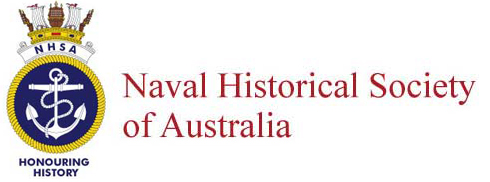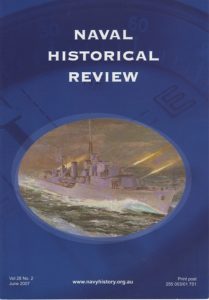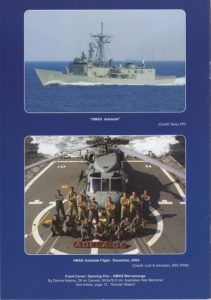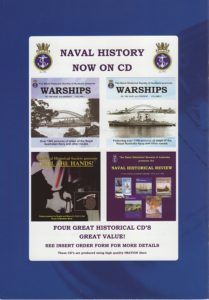- Author
- A.N. Other
- Subjects
- Biographies and personal histories, History - pre-Federation
- Tags
-
- RAN Ships
- None noted.
- Publication
- September 2024 edition of the Naval Historical Review (all rights reserved)
By Walter Burroughs
The June 2019 edition of this magazine contained an article on Matthew Flinders which summarised the great mariner’s life and revealed that his long-lost coffin was rediscovered during works to expand London’s Euston Road Station.
Matthew Flinders was born in the now village, but then thriving market town, of Donington in Lincolnshire on 16 March 1774, where his father was a country surgeon and apothecary. After a very eventful and adventurous career which included being the first to circumnavigate and then name Australia, he died prematurely in London on 19 July 1814 at just 40 years of age. His mortal remains were interred in the vast Hampstead Road, Camden burial grounds. Many graves were later disturbed by railway works which included construction of a major railway station and his remains were lost until discovered in 2019 in an inscribed lead sealed casket.
In Donington a ‘Bring Him Home’ committee was established and at long last the famous navigator was finally laid to rest back at home in the parish church of St Mary and the Holy Rood, where he was baptised exactly 250 years beforehand. This was the church where he attended Sunday school and worshipped at weekly services with his parents before entering the Royal Navy at age 15.
The size and name of the church gives some indication of the earlier importance of this community. ‘Holy Rood’ suggests that the church contained a piece of the original cross (or rood) as an important relic, at which pilgrims from far and wide would come to pray.
Voyages to the South Seas and Terra Australis
In a show of solidarity and confidence following the mutiny on the Bounty, the Admiralty promoted William Bligh to Post Captain and in 1790 gave him command of HMS Providence on another South Seas venture, taking breadfruit to the West Indies. Young Matthew Flinders sailed as a midshipman with this hard taskmaster in a successful voyage, developing valuable skills in navigation and cartography.
As master’s mate, Flinders later accompanied Commander Henry Waterhouse in command of HMS Reliance with Captain John Hunter RN and suite taking up the position of the second Governor of New South Wales. They reached Sydney on 7 September 1795 and Matthew and his new-found shipmate, the surgeon George Bass, set about exploring the coastline in the famous Tom Thumb. Waterhouse, Flinders and Bass remained firm friends and George Bass married Henry Waterhouse’s sister, Elizabeth.
Early in 1797 Flinders was promoted Lieutenant and was awarded a land grant near present day Bankstown. On 7 October 1798 Flinders achieved his first command, the colonial sloop Norfolk, and sailing in her with George Bass they confirmed the existence of Bass Strait.
In need of refit, Reliance returned to England where she arrived in August 1800. With nearly five years experience in the southern continent, Flinders was eagerly sought out by Sir Joseph Banks to bring him up to date with his favourite topic. It was through this introduction that Matthew Flinders was recommended to take command of a new expedition being planned to the South Seas.
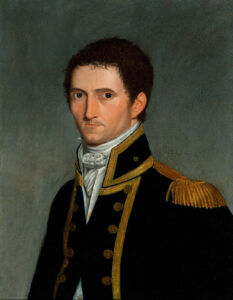
And so it was that at 26 years of age, recently married, promoted Commander and in command of the sloop HMS Investigator, Matthew Flinders sailed from Spithead on 18 July 1801 bound for the Great South Land. This was the last he was to see of his homeland and his new wife for nine years.
As the Investigator voyage was of importance not only in charting the southern continent but with new discoveries anticipated, the Admiralty furnished the expedition with scientific and artistic staff which included the botanist Robert Brown and botanical artist Ferdinand Bauer, both now revered as amongst the best in their respective fields. To these, none other than Sir Joseph Banks invited a 19-year-old up and coming student artist William Westall, who had recently been enrolled at the Royal Academy School, as landscape painter at a handsome salary of 300 guineas.
The work of Flinders in charting much of the then unexplored parts of the Australian coast and circumnavigating the continent was carried out in the remarkably short timeframe of less than two years. But by mid-1803 Investigator was worn out and regarded as unseaworthy, becoming a stores hulk in Sydney Harbour. The strange fact remains that she was later repaired and returned to England with the botanist Robert Brown and artist Ferdinand Bauer in 1805. If Flinders had been less impatient and stayed with his ship, the course of history may have run differently.
The return of Flinders from Australia
But Flinders was always a man in a hurry who pestered the New South Wales Governor Philip Gidley King for an early return to England so that he could publish his charts and broadcast his discoveries.
The return of Flinders homewards from Australia is well documented in our earlier article but to summarise, it was fraught with dangers and disappointments. His first ship HMS Porpoise was wrecked off the Barrier Reef and in a second attempt he was detained for over six years by the French Governor of the Ile de France (Mauritius). It was not until 24 October 1810 that he arrived at Spithead, the departure point from which he had sailed full of enthusiasm more than nine years previously.
The arrival of Flinders in England was not a triumphal return, as he was prematurely aged with his health and spirit broken. Upon arrival he visited the Admiralty for talks with both the First Lord and Secretary who were pleased to announce his promotion to Post Captain.
He was then reunited with his wife Ann who had travelled to London. and they lived in rented rooms at 16 King Street Soho. Friends were visited, acquaintances revived and calls made on the great, such as Sir Joseph Banks.
Flinders set about writing A Voyage to Terra Australis. This immense work was produced in three volumes, plus an atlas of sixteen charts, two plates of coastal profiles, and ten of botanical drawings. He also found time to complete an important scientific memorandum on magnetism of ships which gave rise to the ‘Flinders Bar’, which greatly improved the performance of magnetic compasses in all ships by compensating for the use of iron in their construction.
On 8 February 1812 the now Rear Admiral Bligh took Flinders to Buckingham Palace where he was presented to HRH the Duke of Clarence (later King William IV) who had asked to see some of the latest charts drawn by the great navigator. On 1 April 1812 Ann gave birth to a daughter, who they named Anne.
Working all day and often into the night took its toll and in December 1813 he suffered the beginnings of his last illness. Matthew Flinders died on 19 July 1814, aged 40 years. On 23 July a funeral service was held at St James’ Chapel off Hampstead Road. Afterwards a small cortege led by Ann, supported by her brother-in-law Samuel and her sister Isabelle, proceeded to the adjacent churchyard where Matthew Flinders was laid to rest.
Remembered in Australia
The rich and famous were not in attendance at his funeral and gradually Matthew Flinders was largely forgotten. But not so in Australia, as he was the first to circumnavigate the continent and gave the nation we know today its name, although it was not recognised in his lifetime. Monuments commemorating his exploits exist in positions of prominence in Adelaide, Melbourne, Port Lincoln and Sydney, and fittingly there is now one at Mauritius. Melbourne has a major thoroughfare and railway station named after him, old hands talk of Flinders (Flinders Naval Depot) rather than HMAS Cerberus. Adelaide honours him with a university, and an RAN ship has proudly borne his name. Until the introduction of decimal currency his likeness appeared on the Commonwealth ten-shilling bank note, and other islands and the Flinders Group National Park mark his progress around the continent. Ironically a statue to him was installed at Euston Station in 2014.
The Unknown Painting
Perhaps the best likeness we are able to see of a younger and handsome Matthew Flinders is that painted by the capable French amateur artist, Toussaint Antoine de Chazal de Chamarel, when Flinders, aged about 33, was under house arrest on the Isle de France. In 1985 this painting was purchased for $AUD780,000 by the entrepreneur Alan Bond and was later acquired by the Art Gallery of South Australia where it is now held.
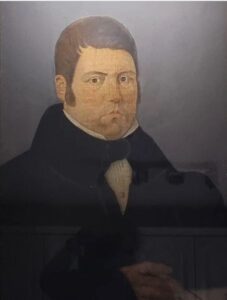
Matthew Flinders aged about 40 by William Westall
We now return to the previously mentioned artist William Westall who had sailed with Flinders in Investigator and survived the wreck of Porpoise. Afterwards, he travelled to Canton in China with a number of his sketches and from there to England where he arrived in February 1805. After establishing himself as an artist, and prior to the return of Flinders, he was re-engaged by the Admiralty and produced a number of works featuring the Australian expedition. After the return of Flinders, Westall worked with the explorer providing illustrations for his work A Voyage to Terra Australis.
A previously unknown portrait of Matthew Flinders, believed to have been painted by William Westall just before the explorer’s death, has recently been discovered in the private collection of an English family.
The painting, acquired by an art dealer about eight years ago and later listed as ‘Unknown Explorer’, was bought for a modest sum by art collectors Mark and Wendy Winter. The current owners have corresponded with the Naval Historical Society and we understand they have undertaken painstaking research to establish the identities of artist and subject, and have had the painting restored. It has now been offered to the National Portrait Gallery of Australia at a favourable price, with some of the profits going to the Donington community towards their efforts to build a Flinders Museum. If that is declined the painting is likely to be auctioned with an estimated asking price of $AUD1.4 million.
This surprise discovery went on display at St Mary and the Holy Rood Church to coincide with Matthew Flinders reburial service. Here Flinders is depicted in civilian dress and is much older and heavier set than in the better-known Chazal de Chamarel portrait.
The Hero Returns
In a moving ceremony on Saturday 13 July 2024, a hearse containing the remains of Captain Matthew Flinders RN, in a coffin draped in the British and Australian national flags, was slowly driven through crowded streets past his old family home to the church in which he and his family worshipped. A Royal Navy Honour Guard bore the coffin into the church and three volleys were fired. The church of St Mary and the Holy Rood was filled with about 400 Flinders descendants, parishioners and numerous dignitaries. There were some relatives from Australia and two descendants of Bungaree, the indigenous man who accompanied Flinders on his circumnavigation; they fittingly placed ochre clay from New South Wales on the coffin. Official representatives included the Governor of South Australia, Her Excellency Frances Adamson, and the Chancellor of Flinders University, Mr John Hood.
May he finally rest in peace.
References:
Burroughs, W., Matthew Flinders: A Personal Assessment, Naval Historical Society of Australia, Sydney, June 2019.
Harris, Rob, Unknown portrait of Captain Flinders sails into view, Sydney Morning Herald, 13 July 2004.
Welbourne, D.J., A History of Donington, birthplace of Matthew Flinders, Published by L. J. Ruskin – Printers, Boston, Lincs, 1973.
